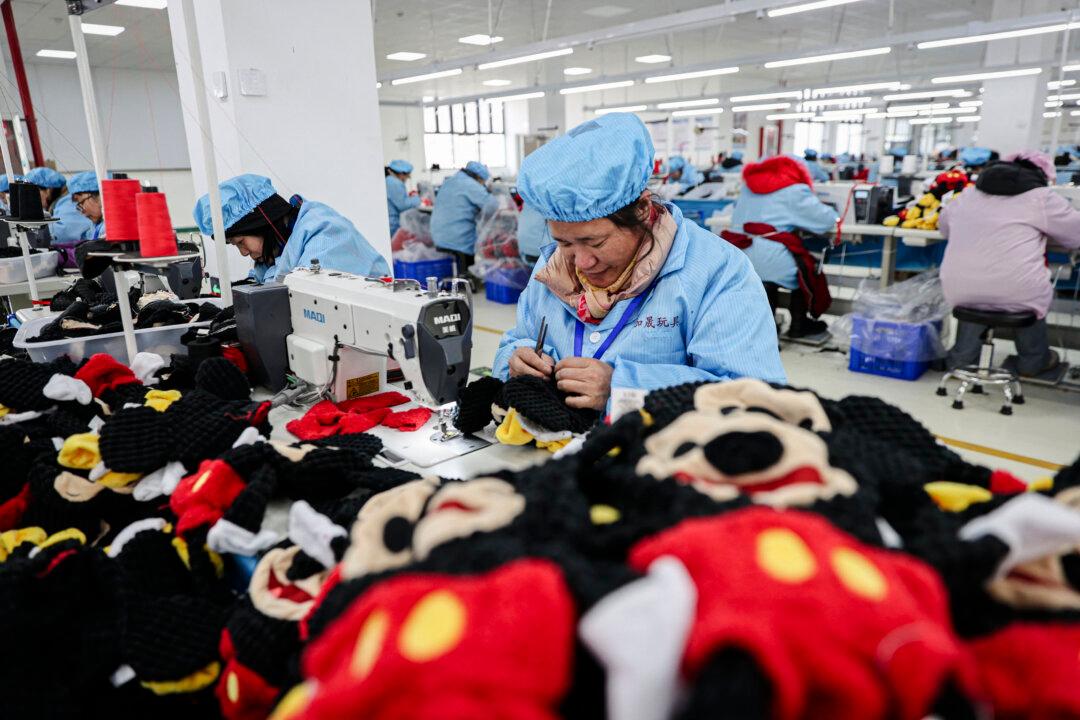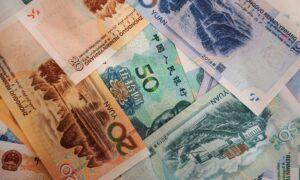After a very disappointing 2023, China has seen some good economic news over the first two months of this year.
After a long stretch of declines, exports increased in the January–February period by 7.1 percent from the same time last year. After several months of disturbing deflation, retail prices showed a modest uptick, rising 0.7 percent above year-ago levels.
As welcome as this news is, it would be a mistake to take any cheer too far. China still faces serious economic problems. Future news is more likely to show additional pain than to build on these small signs of improvement.
Much about the inflation news says that it is a misleading signal. Even as the consumer price measure showed a touch of inflation, the producer price figures in February came in 2.7 percent lower than a year ago. The difference makes it look as though the rise in consumer prices was more of a temporary reflection of activity for the Lunar New Year than anything fundamental.
Aside from such statistical flags, the mild improvement in retail pricing occurred against the backdrop of still poor economic fundamentals. Deflation can cause problems on its own, as Japan’s economy has shown several times. It can prompt consumers to delay purchases in the hopes of getting a better price at a later date. It can prompt businesses to delay or scrap expansion plans. But in China, that has already happened, and is still happening.
Chinese deflation has been more of a symptom than a cause of trouble. So it is important and far from encouraging that consumer confidence in China remains depressed. Though up slightly from the lows of 2023, the government’s index of consumer confidence is still 6 percent below year-ago levels. Meanwhile, in February, the bellwether index of manufacturing purchasing managers’ index was more than 3 percent below year-ago levels.
And there is not much hope for exports, despite the recent upturn. The figure itself is suspect. The export figure in January and February was almost 75 percent above the December level, more than overcoming a year of declines. Though possible, that kind of a leap is highly unlikely. It would seem then that the number is anomalous and will see a correction in the next couple of months or that authorities are nudging the statistics for political or diplomatic reasons—hardly a first for Beijing.
This kind of sudden jump is all the more suspect because Western and Japanese businesses are continuing to diversify their supply chains away from China. They have been moving their overseas operations and sourcing from China to India, Vietnam, Indonesia, and Latin America. There is no sign of an abatement in the process that would cause a jump in Chinese exports, especially one as large as the statistics indicate.
At the same time, Washington, Brussels, and Tokyo are becoming increasingly hostile to China trade. Tokyo is trying to lead the world’s developed nations in the G-7 to source rare earth elements outside China. Washington has kept high tariffs on Chinese goods in place, cut off trade and investment in technology, refused subsidies to any product with a high proportion of Chinese components, and, most recently, threatened steep tariffs on Chinese electric vehicles (EVs). Brussels, while complaining about Chinese “dumping,” has also threatened tariffs on Chinese EVs.
The export and price news for January and February may signal that the worst of China’s downward economic adjustment has run its course and that the pace of decline will now moderate, if not reverse. Given the problems with the Chinese consumer, businesses’ reluctance to expand, and the still slackening enthusiasm about China trade in Western and Japanese businesses as well as their governments (not to mention the economic drag imposed by China’s unresolved property problems), the likelihood is that future months will continue to see softening exports and if not deflation, other symptoms of economic malaise.







